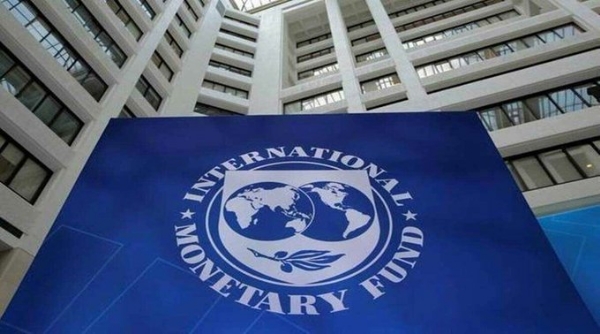India's Debt to GDP Ratio to remain stable: IMF
13 Apr 2023 11:01:05
New Delhi, Apr 13: After declining for two straight years till FY23, India’s debt-to-GDP ratio is set to follow an upward trajectory for the next four financial years starting FY24, the International Monetary Fund (IMF) projected on Wednesday. In its latest Fiscal Monitor report, the IMF said India’s combined debt-to-GDP ratio (Centre plus states) would rise a tad to 83.2 percent in FY24 and will hit a high of 83.8 percent in FY27 before it starts to moderate.

As the Covid-19 pandemic hit the economy, substantially reducing revenues and increasing government expenditure, India’s public debt-to-GDP ratio shot up from 75 percent in FY20 to 88.5 percent in FY21. However, it gradually reduced to 83.1 percent in FY23 as revenues and expenditures stabilized. The IMF projected that India’s combined fiscal deficit (Centre + states), which hit a high of 12.9 percent in FY21 would continue to moderate to touch 7.6 percent in FY29. Without naming India, the report said under current projections, the envisaged gradual and moderate fiscal tightening will not be sufficient to prevent public debt ratios from resuming an upward trend, as nominal GDP slows, driven by some large advanced and emerging market economies. “Interest payments as a share of revenues in emerging market economies and low-income developing countries are expected to remain higher over the medium term than before the pandemic,” it added. However, Paolo Mauro, deputy director, of the fiscal affairs department at the IMF said the debt to GDP ratio in India would remain stable in the medium term, unlike some other large economies where the Fund sees a continued increase. “The debt ratio in India right now is 83 percent, so it’s high. The good news is that it is largely in domestic currency held domestically. It’s also fairly long maturity, so those are the positives. The other positive is that because we project very strong economic growth into the medium term, that is going to allow the debt to remain stable,” he added. The IMF said the role of inflation surprises in debt reduction during 2022 was shaped by individual countries’ debt size and composition. “Countries with high initial levels of debt, combined with large inflation surprises and strong growth, experienced significant debt declines (Greece). In some emerging market economies, on the other hand, rising interest rates almost fully offset the impact of inflation surprises (India),” it added.
The report clarified that IMF’s estimates differ from the Indian government, particularly regarding disinvestment and license-auction proceeds, net versus gross recording of revenues in certain minor categories, and some public sector lending. “Starting with FY2020/21 data, expenditure also includes the off-budget component of food subsidies, consistent with the revised treatment of food subsidies in the budget. The IMF staff adjusts expenditure to take out payments for previous years’ food subsidies, which are included as expenditure in budget estimates for FY2020/21,” it added.